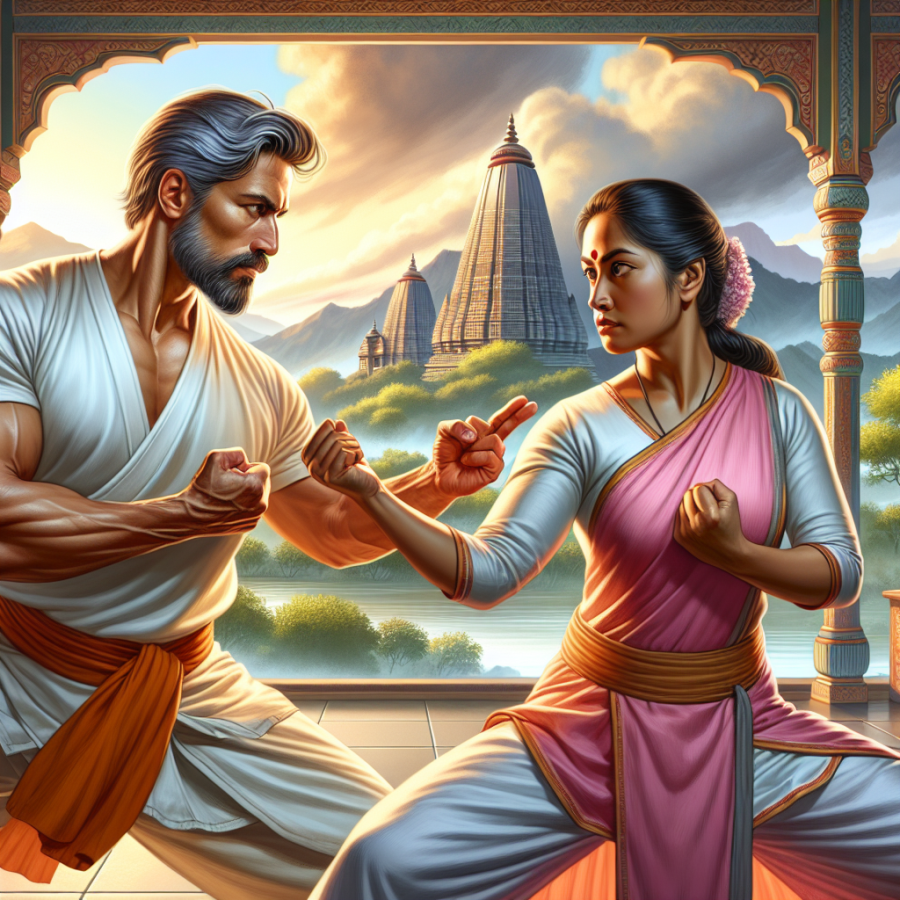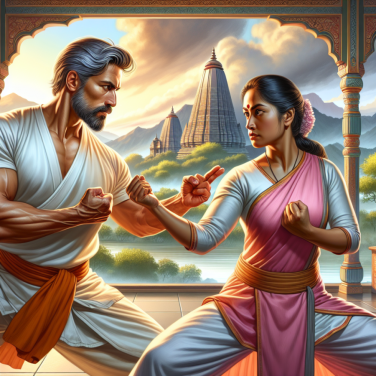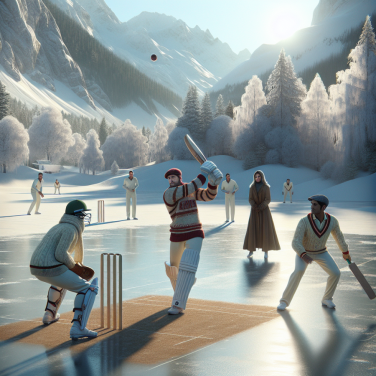Unveiling Vajra-Mushti: History and Evolution of India's Martial Wrestling Tradition
The legacy of Vajra-Mushti, an ancient Indian martial art form, stretches back centuries, deeply rooted in the socio-cultural fabric of historical India. The term "Vajra," often linked with the indestructible thunderbolt weapon wielded by the Hindu god Indra, symbolizes the strength and solidity that this form of wrestling embodies. "Mushti" refers to the fist, highlighting the hand-to-hand combat aspect of the tradition. Together, Vajra-Mushti translates to the "diamond fist" or adamantine hand-to-hand combat method, indicative of the power and fortitude required in this discipline.
The genesis of Vajra-Mushti can be traced to various ancient texts, including the Malla Purana—an exhaustive treatise on wrestling—and the Manusmriti, which both offer insights into the rules and practices of early martial wrestling. It is also depicted in temple sculptures, such as those found in the historic caves of Ellora, which provide a visual testament to the art's age and continued importance throughout the centuries.
Over time, Vajra-Mushti evolved alongside other martial practices in Indian history. It was not merely a sport; it had practical applications in warfare. Warriors would undergo rigorous training to master the grappling techniques and hand-to-hand strikes designed to incapacitate or defeat their opponents with precision and might.
During the Mughal era, the art saw shifts in its practice due to Persian influences, leading to the emergence of new variants like pehlwani, which incorporated elements of Persian koshti (wrestling). Despite these changes, traditional Vajra-Mushti managed to retain its identity, often practiced within akharas, traditional Indian gyms where multifaceted physical and spiritual training took place.
Under the patronage of various Indian kings, Vajra-Mushti flourished. It was during this period that the Maratha Empire, with its emphasis on military prowess, encouraged the proliferation of the art form. This fostered a golden era for the martial practice where it was diligently mastered by the warrior class, particularly the Kshatriyas.
Colonial India brought about another period of transformation for Vajra-Mushti. Despite encountering some decline due to British colonial policies, which often frowned upon local martial traditions, Vajra-Mushti persisted, primarily because of its deep entrenchment in village festivities, religious ceremonies, and local culture.
Read also:
Revolutionizing Sports Betting: The Rise of Trading AI
Techniques and Training: Mastering the Intricacies of Vajra-Mushti Combat
Mastering the intricacies of Vajra-Mushti combat is an endeavor that requires an in-depth understanding of its techniques and a rigorous training regimen to perfect the ancient art. Known as the "thunderbolt fist," this form of traditional Indian wrestling combines elements of striking, grappling, joint locks, and pressure point tactics, making it a complex and comprehensive martial discipline.
**Understanding the Basics**: Before delving into more advanced techniques, practitioners must first grasp the foundational moves of Vajra-Mushti. This begins with learning the proper stances and movements that allow for quick advances and retreats, maintaining balance and readiness for both attack and defense. Applicants are educated in the art of hand positioning to ensure their fists emulate the 'vajra' or thunderbolt effectively, delivering powerful blows.
**Striking Techniques**: Vajra-Mushti includes a variety of punches, kicks, elbows, and knee strikes. Fighters learn to coordinate their breath with their strikes, increasing the power and efficiency of their attacks. Precision is stressed, with the aim of targeting the opponent's vital points to yield maximum impact with minimum expenditure of energy.
**Grappling and Clinch Work**: Essential to Vajra-Mushti is the ability to close the distance between fighters. This involves a mix of clinching techniques enabling one to gain control over an opponent. Wrestlers are taught how to execute throws, takedowns, and sweeps from the clinch, establishing dominant positions from which to apply submissions or strikes.
**Joint Locks and Submissions**: The practice of manipulating an opponent's joints is a critical element of Vajra-Mushti, as it offers a means to control or incapacitate without causing excessive harm. Training includes the application of various joint locks on the wrists, elbows, shoulders, and knees. Additionally, chokeholds and other submission holds are studied for situations where they might be necessary.
**Pressure Points and Vital Targets**: The study of the body's vulnerable points is another aspect that Vajra-Mushti practitioners must learn. Striking these specific areas can be incapacitating; therefore, knowing their locations and the proper ways to strike them is a vital part of the training.
**Defense and Counter-techniques**: Defending against an opponent's strikes and takedowns is just as important as being able to execute them.




